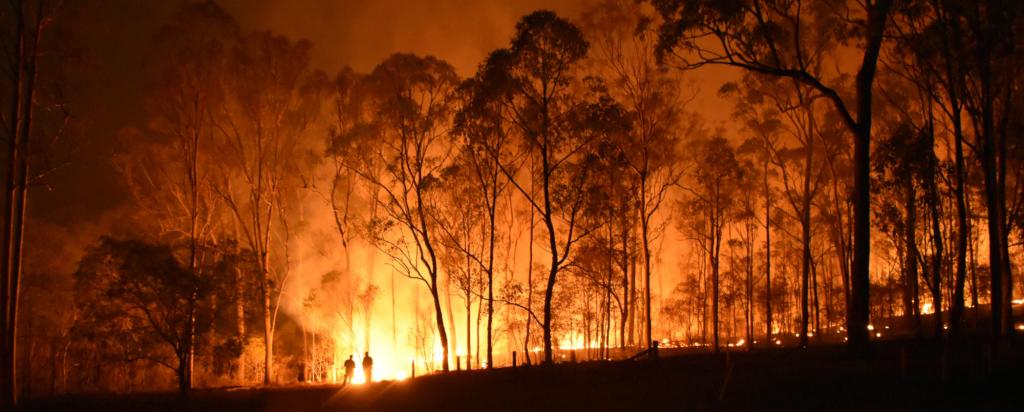
Bushfires can generate hazardous chromium in soil
Bushfires heat soil to extreme temperatures and this causes oxidation of chromium to a highly toxic and carcinogenic form. A large portion of newly oxidised chromium is mobile and could be flushed into waterways after rainfall. This is a previously unrecognised environmental risk associated with bushfires.
Our research
In soil, chromium is usually present in the Cr(III) oxidation state and is environmentally benign. The oxidised form Cr(VI) is toxic, carcinogenic, and typically highly mobile in the environment. X-ray Absorption Spectroscopy (XAS) can distinguish between chromium oxidation states, and can be used to quantitatively measure the proportion of Cr in either chemical form.
This study used XAS to firstly determine which minerals host chromium in unpolluted soil collected near Lismore, NSW. Cr(III) was found to be substituted within the Fe(III) oxy/hydroxide minerals hematite, goethite and ferrihydrite. These minerals undergo transformations at high temperatures, but the fate of associated Cr was unknown
A series of synthetic mixtures of Cr substituted Fe-oxide minerals, as well as the natural soil sample, were then heated to bushfire relevant temperatures. Within the natural soil sample, up to 35% of Cr(III) was oxidised to the Cr(VI) form by 600℃. Above 400℃, 30-40% of that Cr(VI) was exchangeable, meaning it could be flushed into waterways after rain events.
This work has identified a previously unrecognised pathway for hexavalent chromium formation in the environment, and a potential environmental and health risk that could impact soil and water quality following bushfires.
The impact
Despite the frequency and intensity of bushfires, particularly in Australia, little is understood about the impact on trace metals in affected soils. We know that trace metals are commonly associated with iron oxide minerals and organic matter, but these phases will transform under high temperatures.
This study is the first to investigate chromium geochemistry in bushfire affected soils.
Burton et. al. resolved the fate of chromium in bushfire affected soils by showing that heating of Cr(III) substituted iron oxides drives rapid oxidation to Cr(VI). Furthermore, a large portion of this newly formed Cr(VI) is mobile and potentially bioavailable in the environment. This is a concern because bushfire affected landscapes are susceptible to erosion and run-off after rainfall events, and under these circumstances, Cr(VI) could be flushed into sensitive waterways or drinking water reservoirs, potentially impacting human health.
This is a globally significant important finding that will translate into water resource monitoring and management programs around the world.